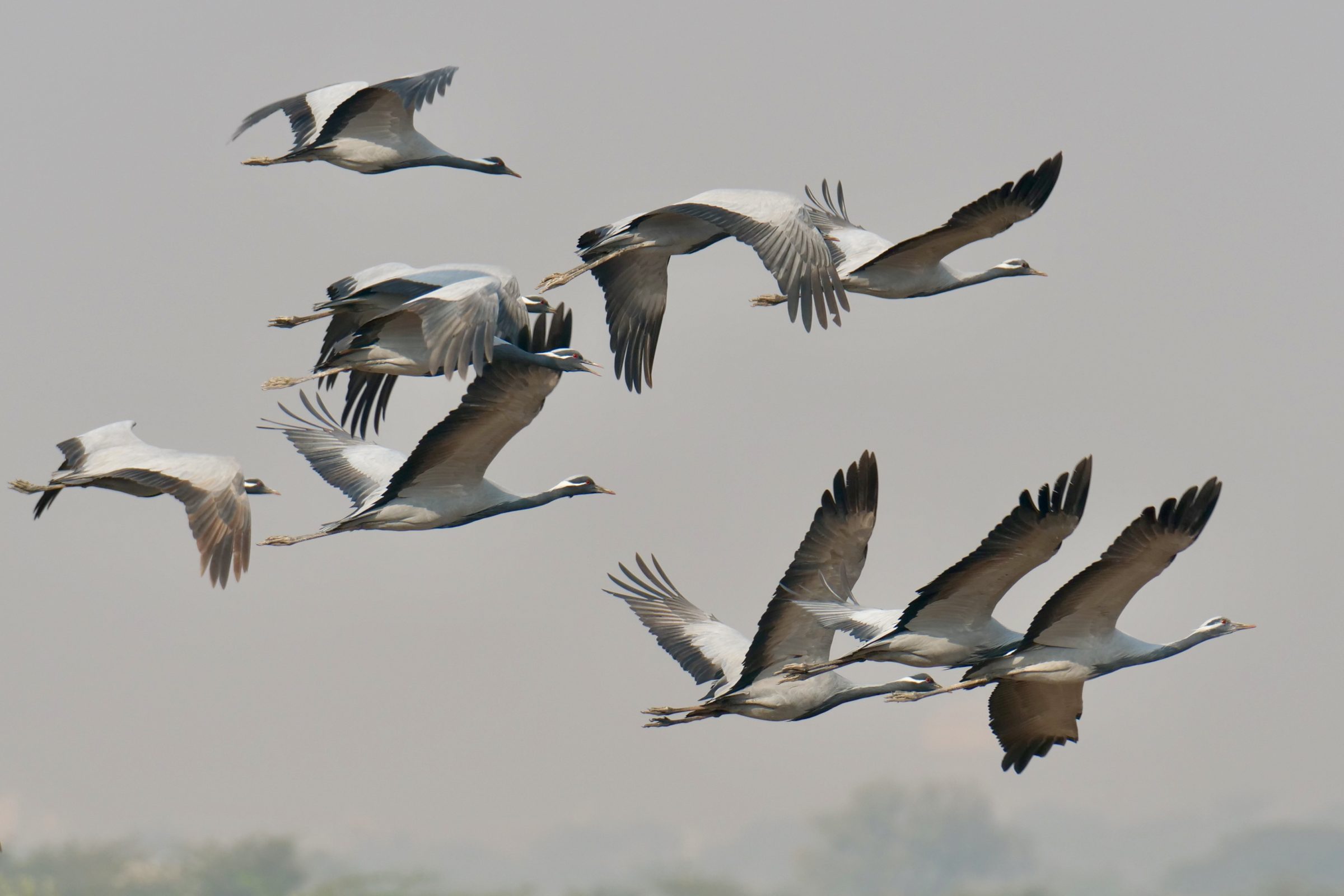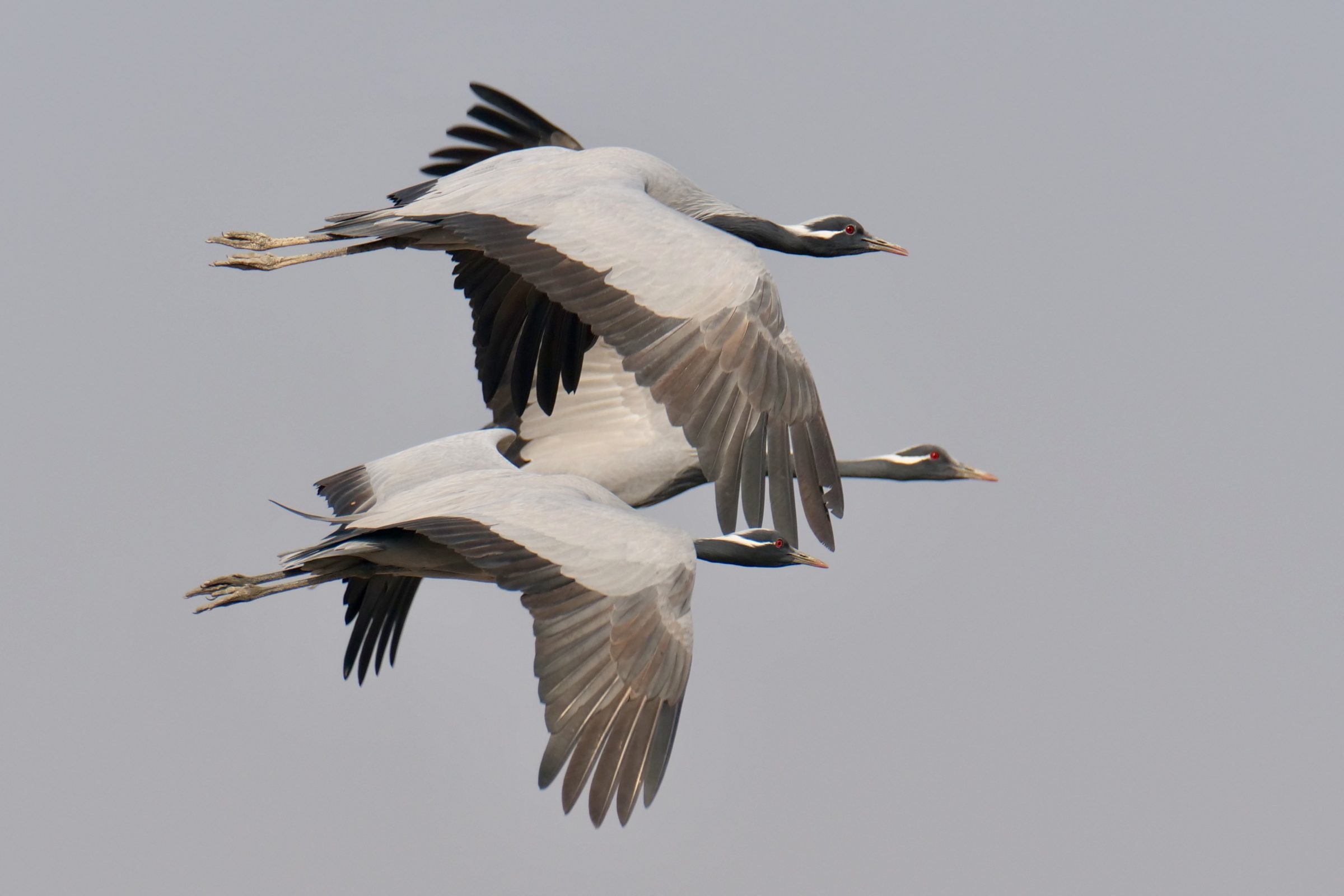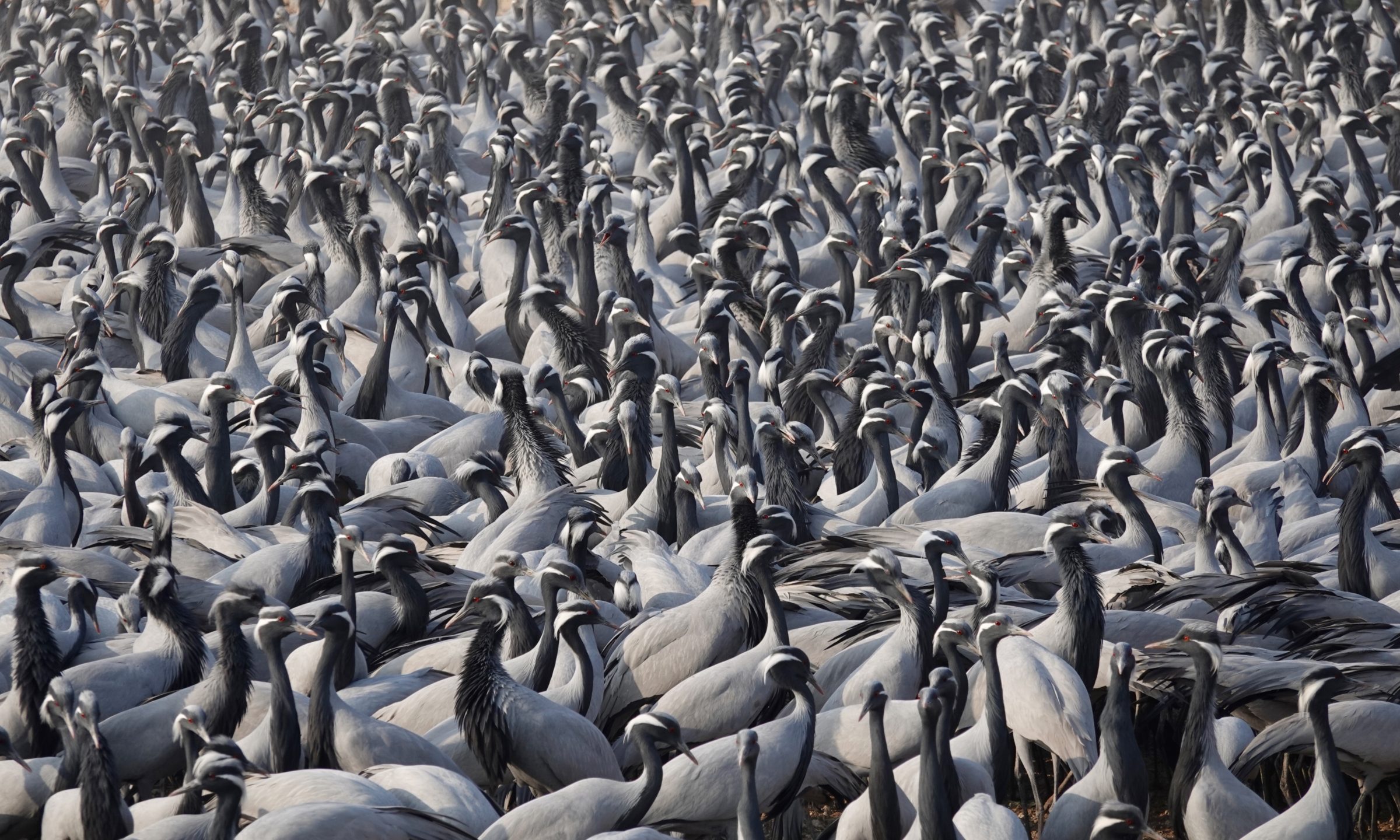Cranes: in this case, Demoiselle cranes, the world’s smallest crane species,
Jains: adherents of Jainism, an Indian religion which is older than Christianity and Islam.
The practical application of Jainism’s central principle/vow has produced an astounding result.
For Demoiselle cranes (and for human admirers of one of the world’s more elegant birds) Khichan – a modest village in the Thar Desert – is now the world’s most rewarding destination.
The featured image shows just some of the assembled multitude.
I took the above photo at 8.49 am on 20 February 2020.
Seventy minutes earlier, the ground on which the birds thronged had been an unoccupied, seemingly-bare rectangle.
Along the long sides of the rectangle were some of Khichan’s flat-topped houses.
Atop their roofs were some very excited visitors; some of them had flown in from places even further distant than the Demoiselle cranes’ summertime breeding sites.
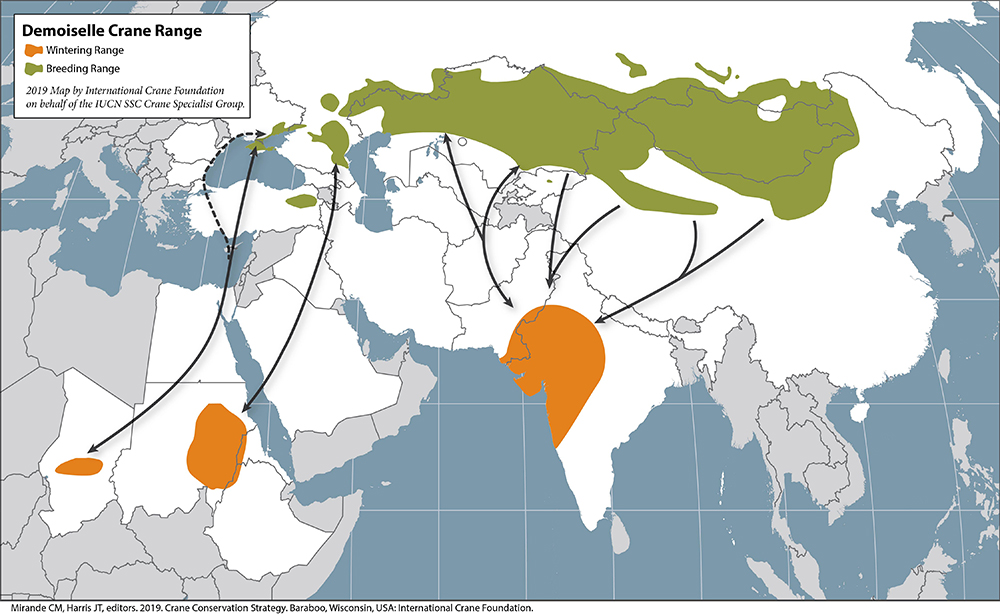
Most of the lens-wielding visitors had arrived well before daylight.
Sunrise was at 7.13; soon after, we could clearly see the barley which Jain villagers had very neatly arrayed on the raked ground within the rectangle.
At 7.50 am the first of the breakfast guests were overhead.
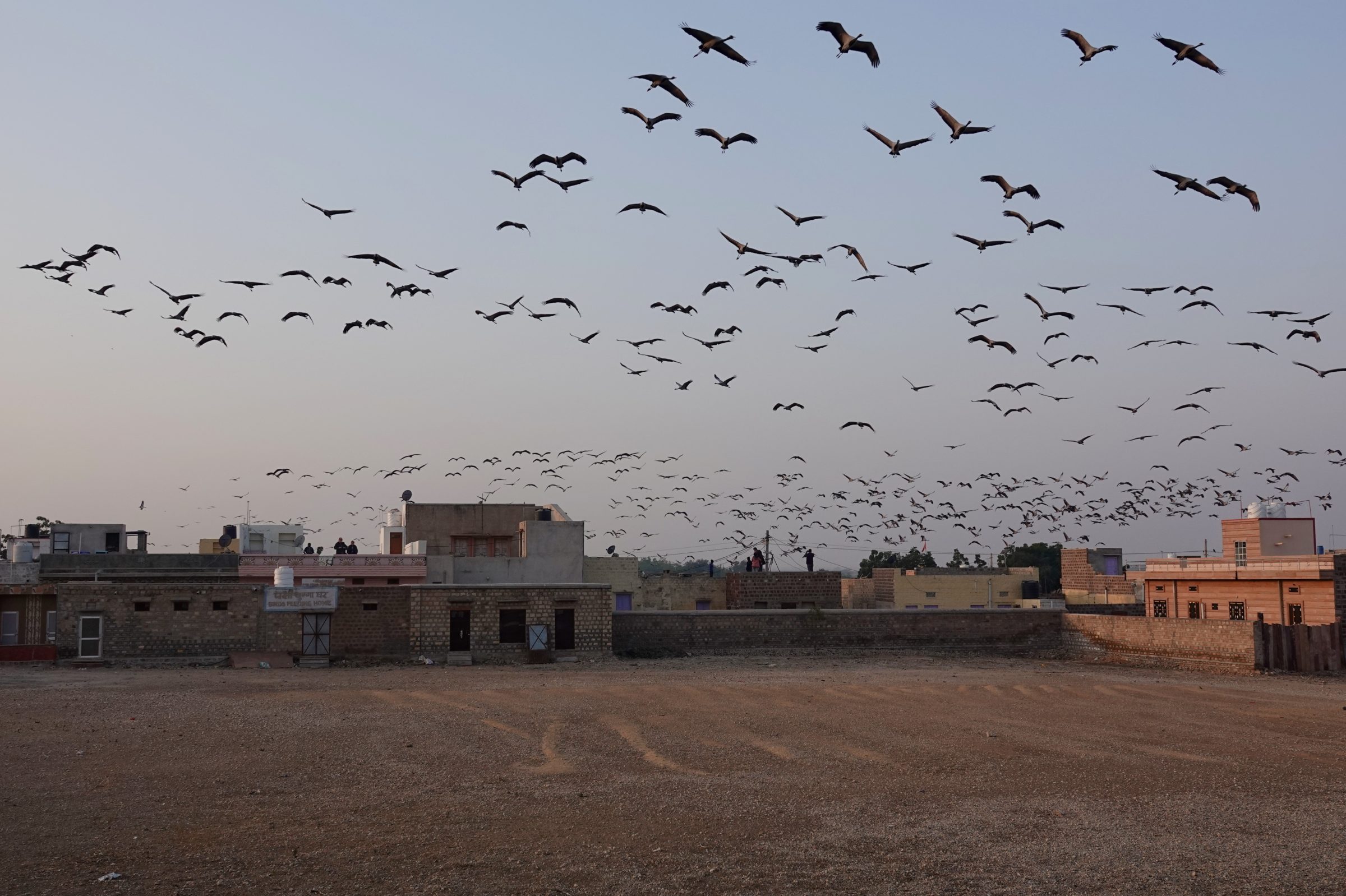
A few minutes later, the first diners were “at table”.
Soon, both “table” and sky were busier than any airport or restaurant.
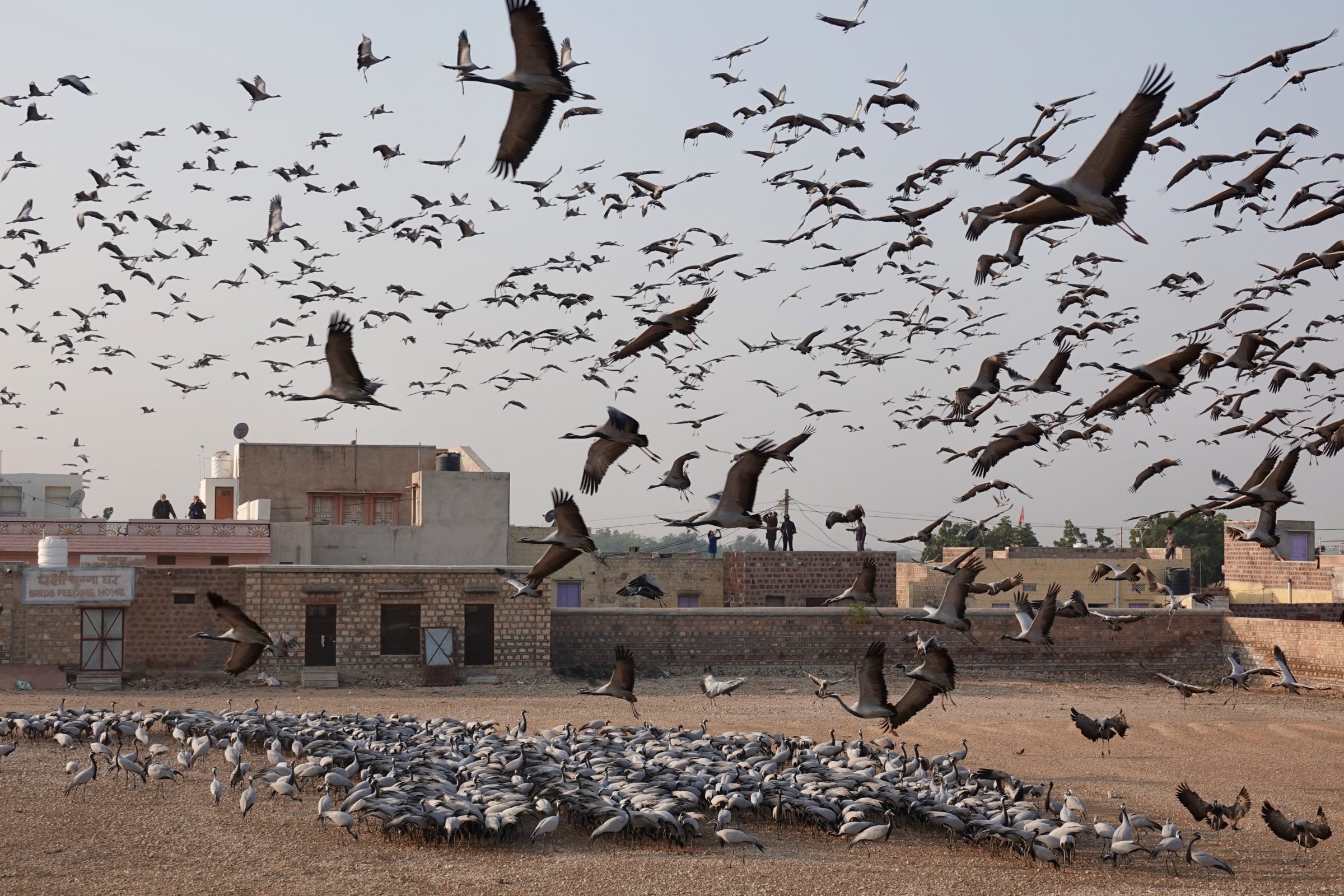
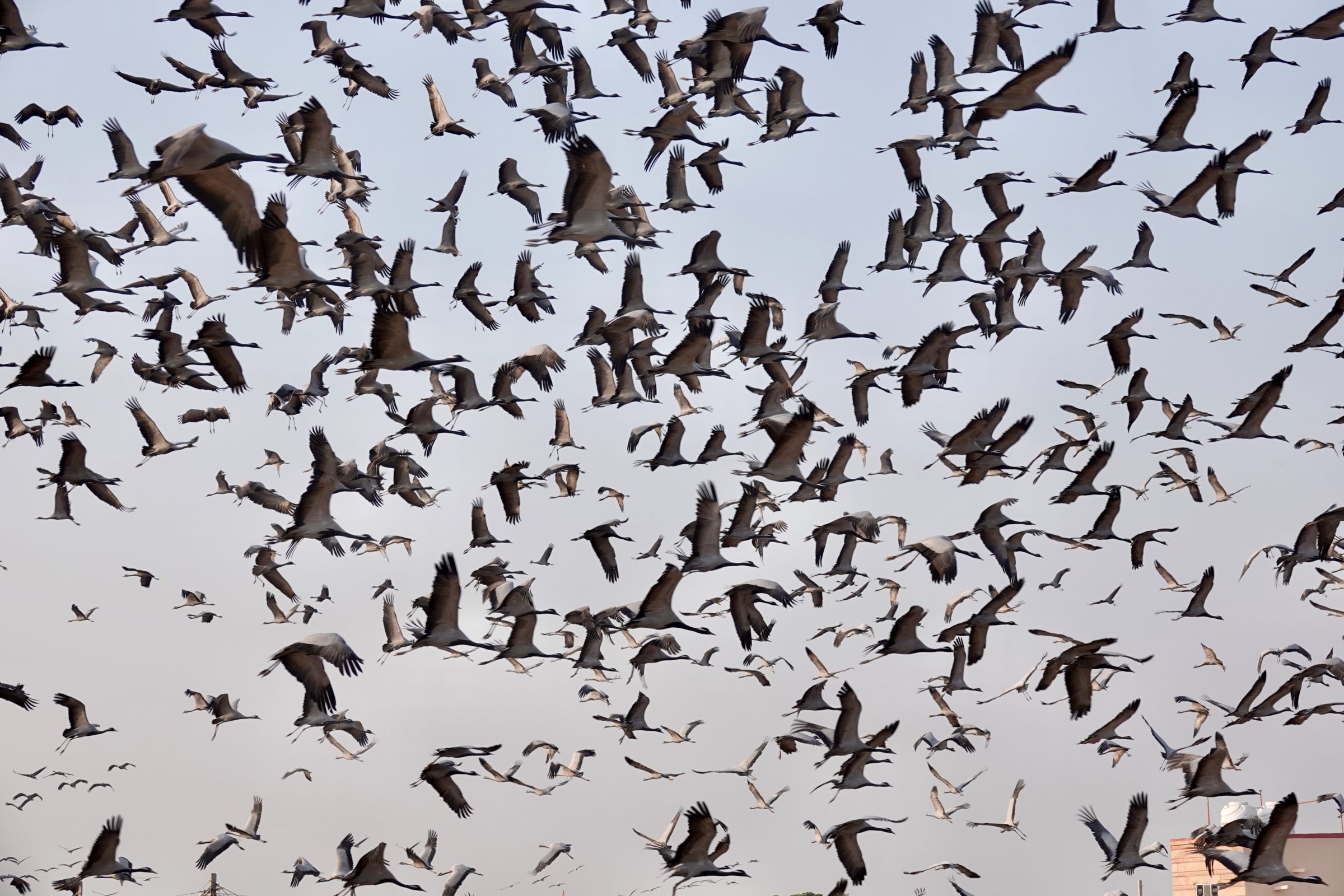
In flight and when on terra firma, Demoiselle cranes are almost unfailingly elegant; managing the transition from sky to ground, however, can be an awkward manoeuvre.
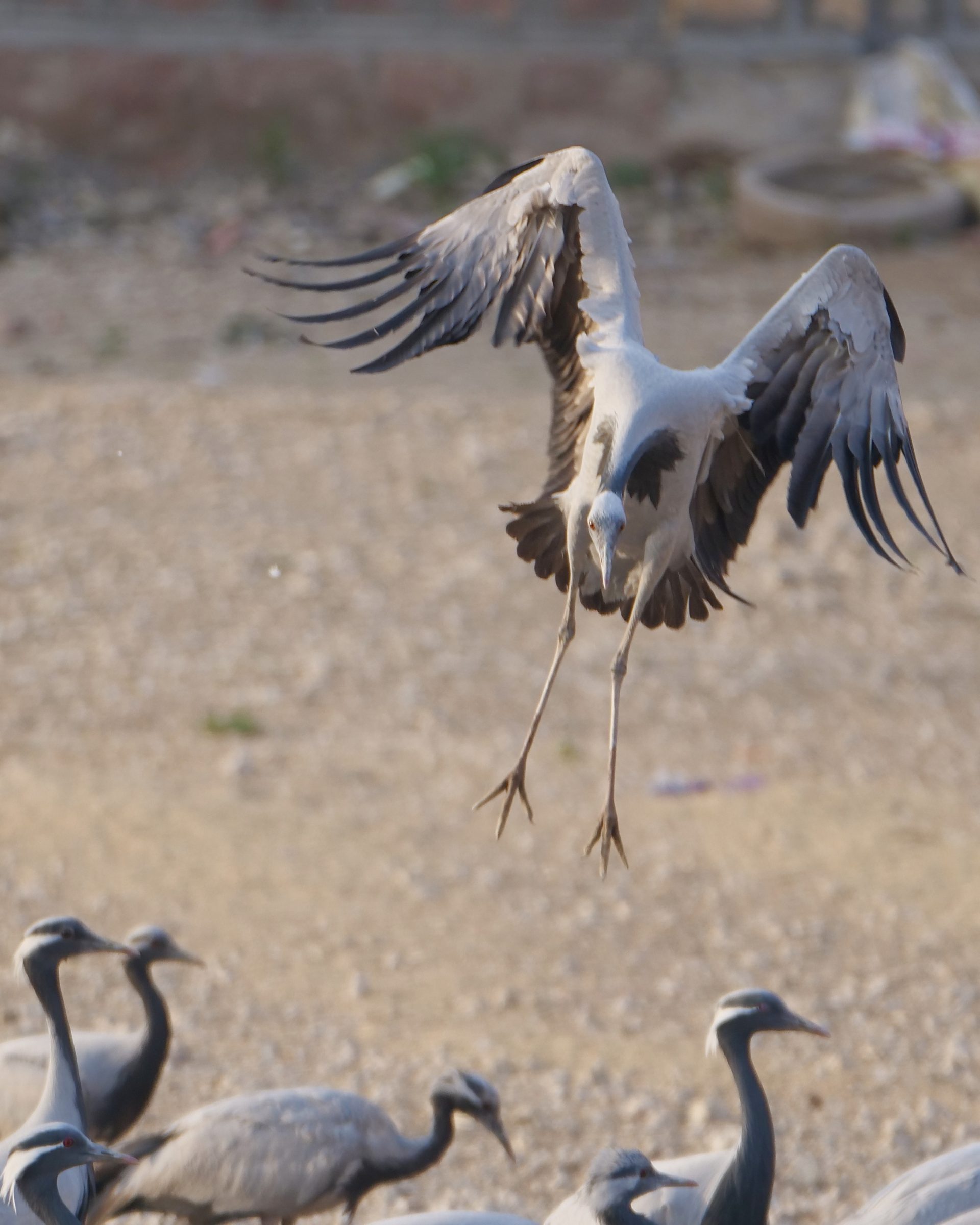
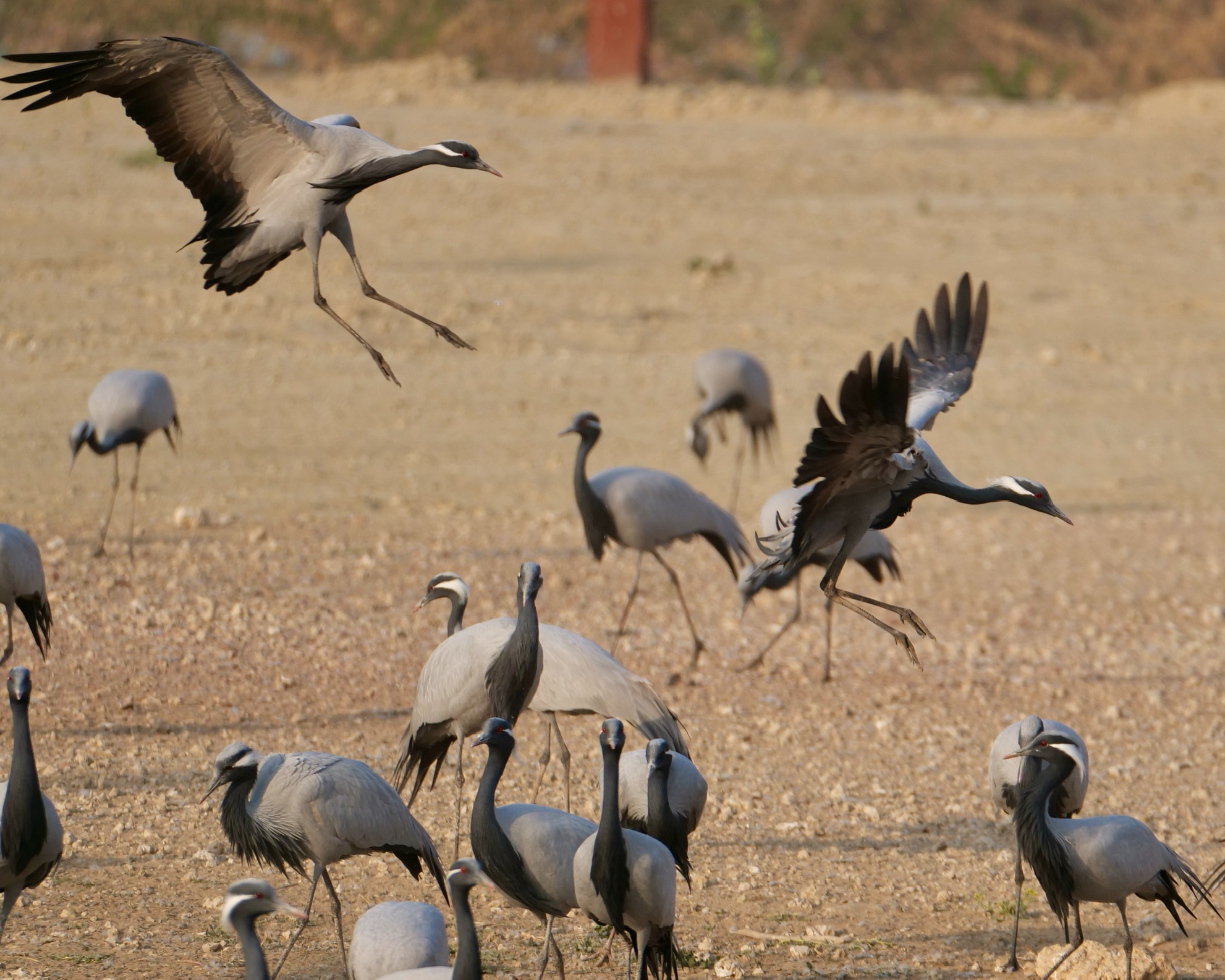
Ahimsa – for which “non-violence” is the common, too-simple English translation – is a concept/tenet common to Jainism, Hinduism and Buddhism. (Yoga, too)
However, in the words of Mahatma Gandhi:
No religion in the World has explained the principle of Ahiṃsā so deeply and systematically as is discussed with its applicability in every human life in Jainism. As and when the benevolent principle of Ahiṃsā or non-violence will be ascribed for practice by the people of the world to achieve their end of life in this world and beyond, Jainism is sure to have the uppermost status…
Jains regard Ahiṃsā as the most important of their five “vows”.
They see it as something rather more than just being non-violent, respecting all living beings, and endeavouring to do no harm to any of them.
Many Jains believe they ought actively help fellow living beings:
In the 1970s, Ratanlal Maloo, a native of Khichan who had been working in Odisha, returned to the village. Since he did not have a lot of work, his uncle gave him the job of feeding pigeons. Being devout Jain, Ratanlal and his wife accepted the task. Ratanlal would carry grain sacks to the feeding place, and his wife would help him spread the grains on the ground. A number of pigeons, sparrows and squirrels started coming to the place; peacocks also occasionally visited the place. In September, a dozen demoiselle cranes (called kurja in Rajasthani) also joined the other birds. These birds had been seen visiting the farmlands of Kheechan earlier. During September-February, around 100 cranes came to the feeding place. During the next winter, around 150 cranes visited the place. As the cranes grew in numbers, the local dogs started hunting them. So, Ratan Lal asked the village panchayat to allot him some land on the outskirts of the village. Some of the villagers joined him in building a chugga ghar (“bird feeding home”), with a granary and a fence. Several Jain traders supported the initiative by supplying grains.
The italicised quotation is from Wikipedia’s entry on Khichan, which is worth reading in full.
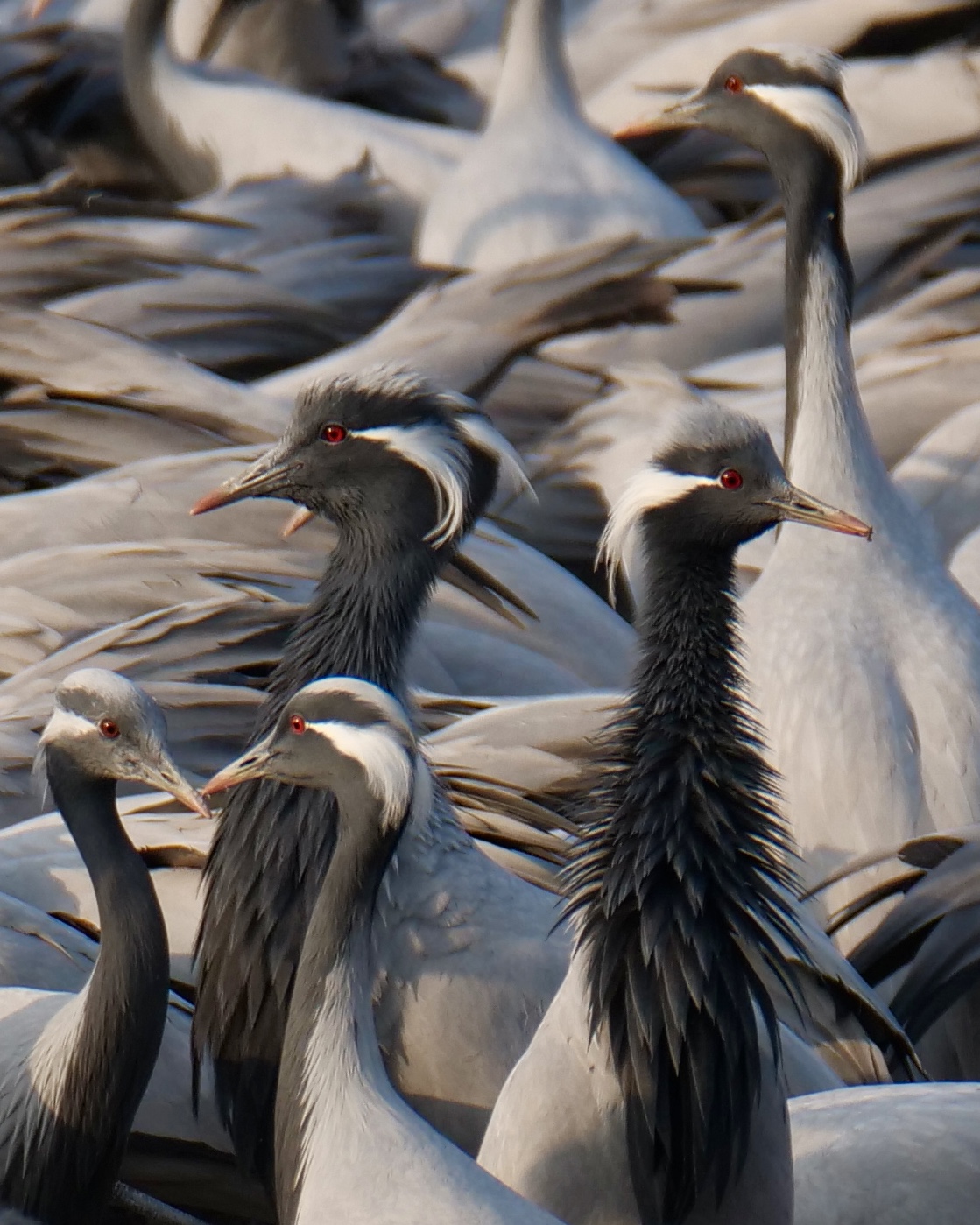
Doubtless, some disapprove of the Jain villagers’ “unnatural” relationship with “their” cranes.
It is true that if Khichan’s villagers lost their enthusiasm or their religion, or they moved to “the city”, the cranes could be in dire straits, after having become accustomed to such singular hospitality.
The feathered freeloaders’ ranks have swelled some three hundredfold over the last several decades!
It is, however, also true that both cranes and villagers have benefited, and there is no evidence that the villagers have tired of the cranes, or of their village, or that they have become any less devout,
Nor is there any sign, to my knowledge at least, of any ghastly, out-of-scale “crane tourism” developments.
The existing “crane tourism” is pleasingly low key, gently handled by local people, in what remains an unassuming village.
Also, “sacrificing” some of the local harvest to feed the cranes is quite possibly a “win”, economically, even before one counts the tourism factor; when suitable food is “laid on” for them in the village, cranes have no reason to trample local fields.
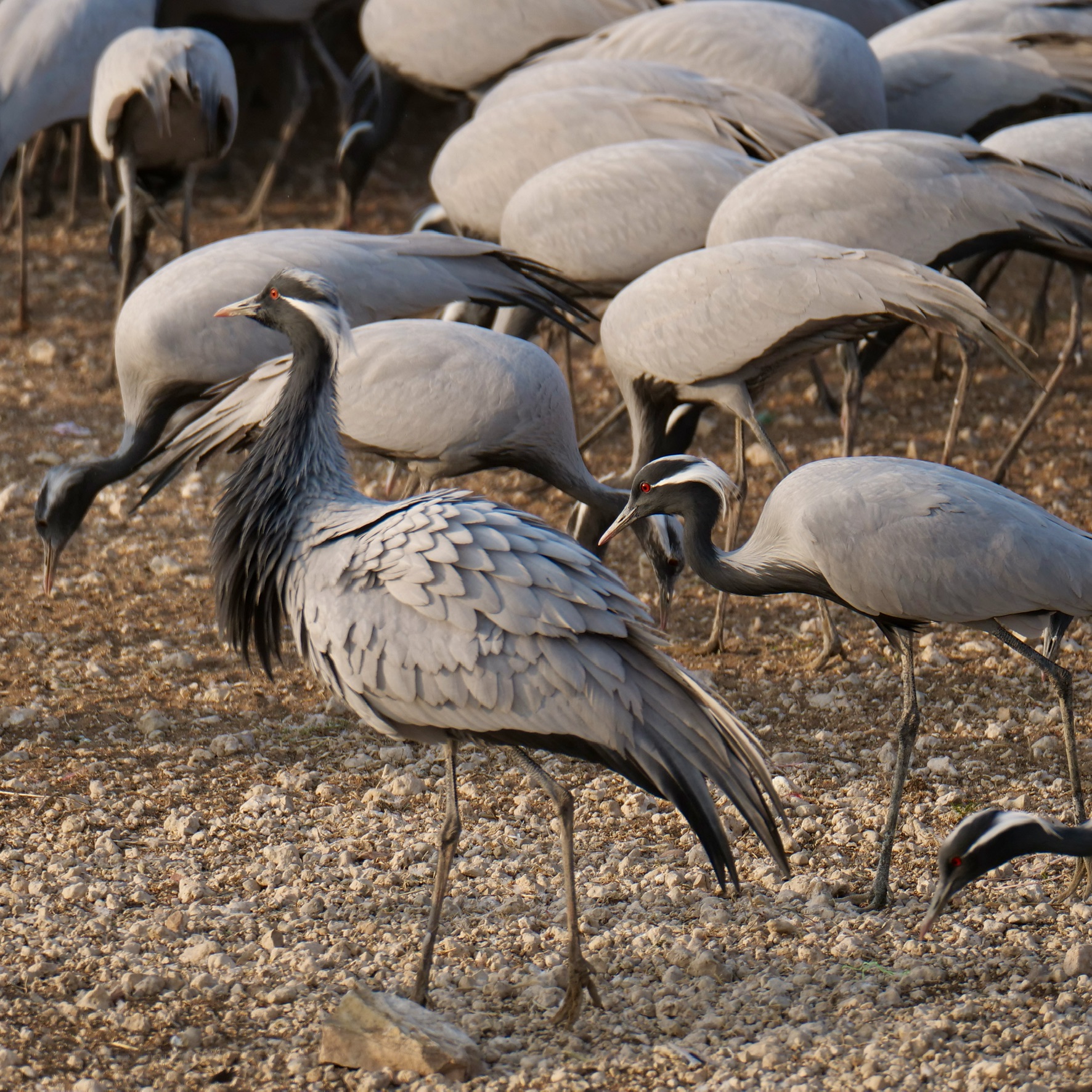
Eighty minutes after the first cranes had landed, there were many more departures than arrivals.
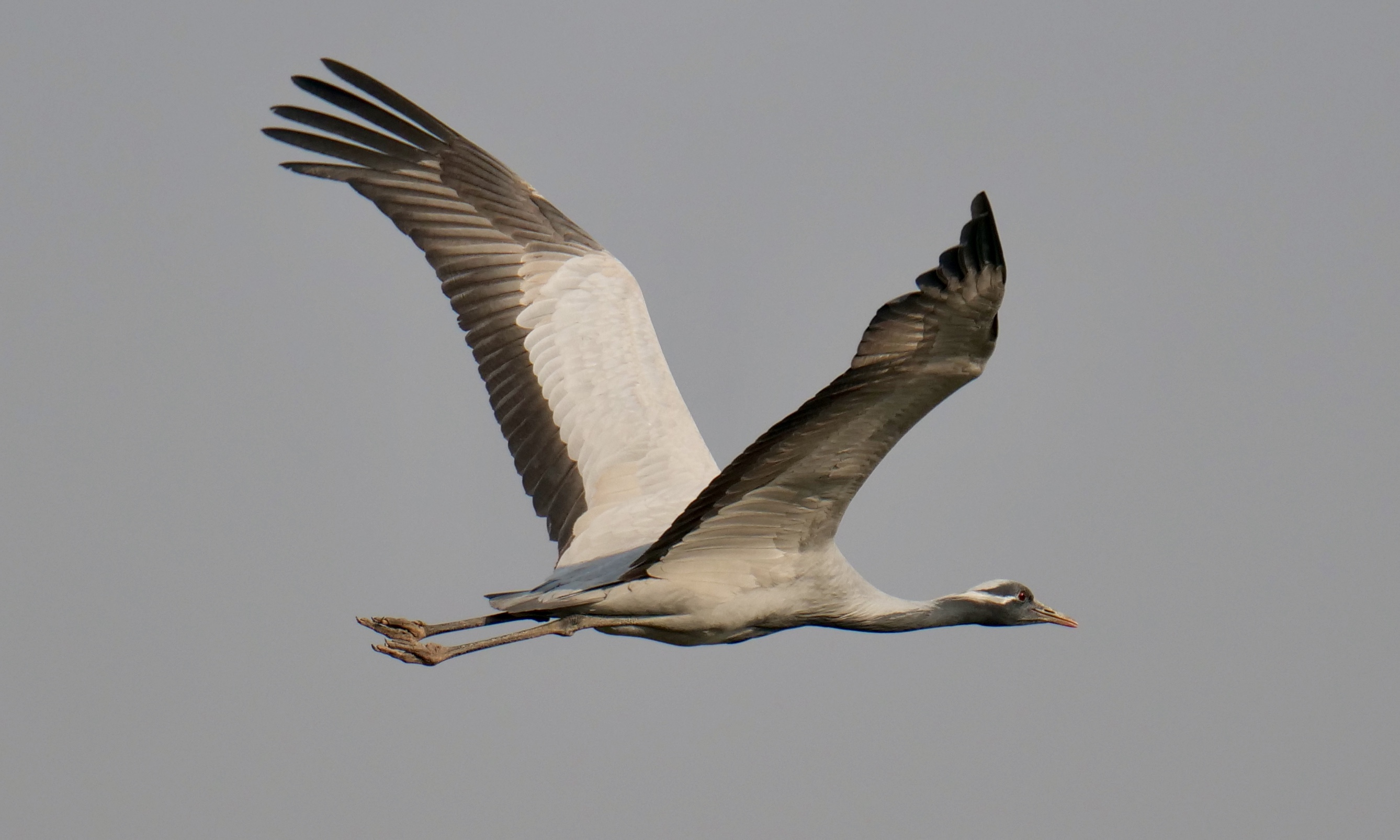
By 10 am their “table” was almost entirely vacated, and thousands of satisfied diners had relocated to a nearby pond/reservoir, just a couple of minutes flying time away.
it took us just a few minutes to catch up with them, as you will see in the next post
